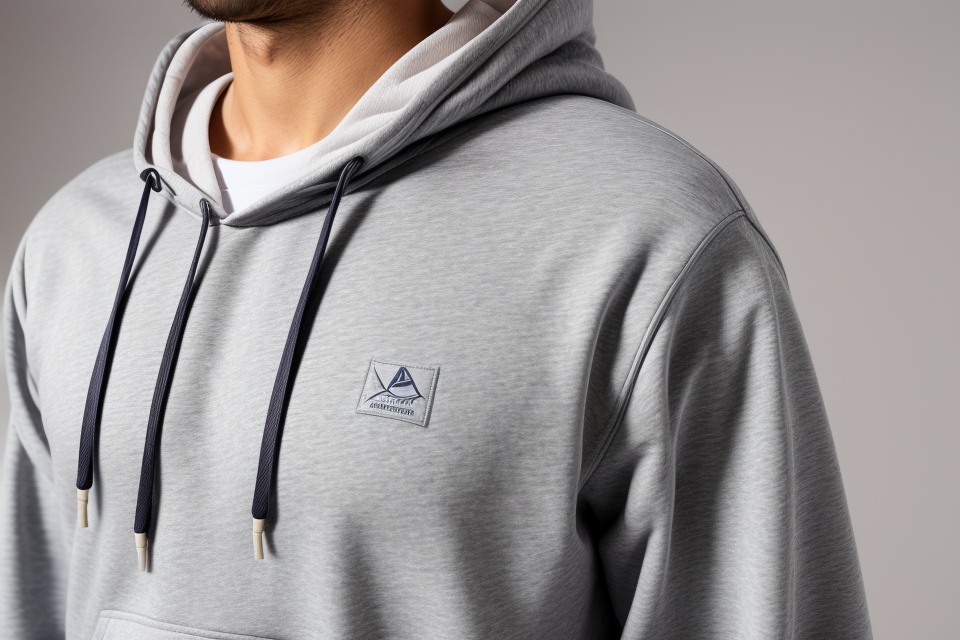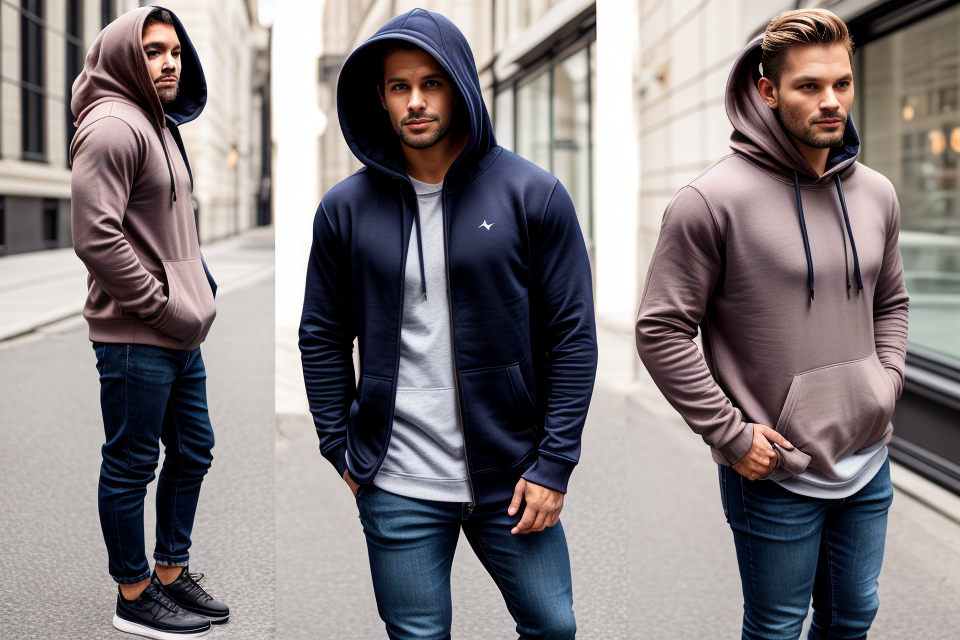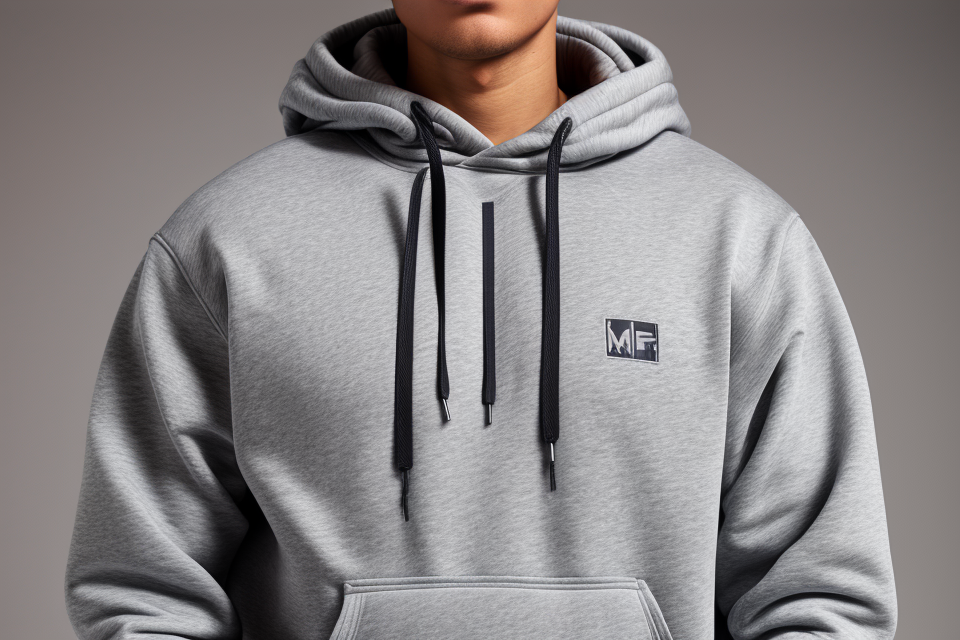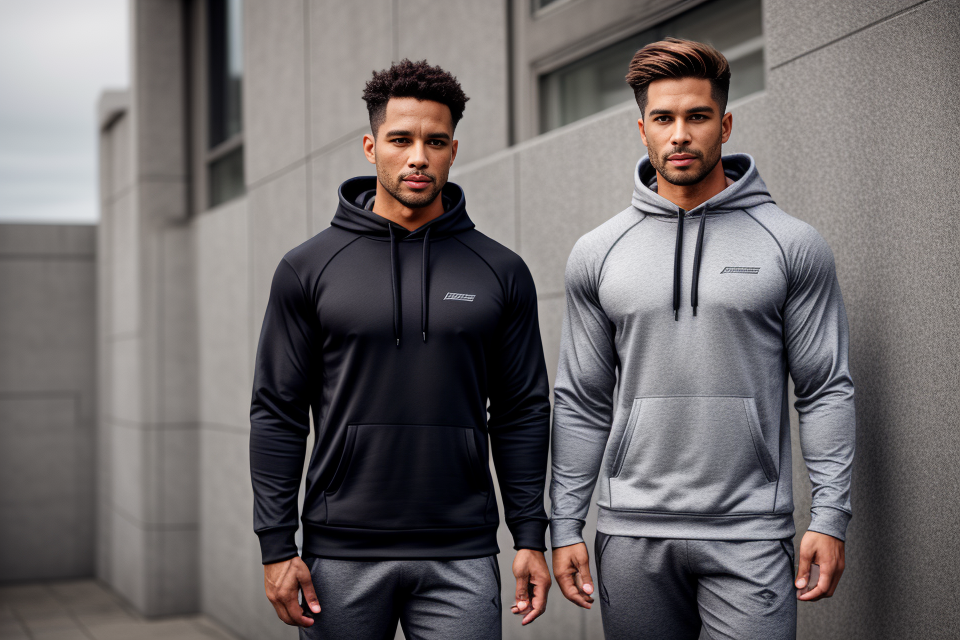
Hoodies are a staple clothing item for many of us, providing warmth and comfort throughout the colder months. But not all hoodies are created equal. When it comes to finding the best quality hoodie, durability and long-lasting wear are key factors to consider. But what makes a hoodie durable? In this article, we’ll explore the various factors that contribute to a hoodie’s longevity, from the type of fabric used to the quality of the stitching and design. Whether you’re a hoodie connoisseur or just looking to invest in a high-quality piece, read on to discover what makes a hoodie durable and long-lasting.
A hoodie’s durability and long-lasting qualities depend on various factors such as the fabric, stitching, and design. A hoodie made from high-quality materials like cotton or fleece will generally be more durable than one made from lower quality materials. The stitching of the hoodie is also an important factor, with stronger stitching leading to a longer-lasting hoodie. Additionally, a well-designed hoodie with reinforced seams and double stitching in high-stress areas will also be more durable. Taking proper care of the hoodie, such as washing it properly and avoiding high temperatures in the dryer, can also help increase its lifespan.
Factors Affecting Durability
Material
Synthetic Fabrics
Synthetic fabrics are a popular choice for hoodies due to their durability and resistance to wear and tear. Some of the most common synthetic fabrics used in hoodies include polyester, nylon, and acrylic. These fabrics are known for their strength and ability to withstand a lot of use without showing signs of wear.
One of the main advantages of synthetic fabrics is their ability to resist wrinkles and shrinkage. This means that hoodies made from synthetic fabrics will maintain their shape and size, even after multiple washes. Additionally, synthetic fabrics are often treated with water-repellent finishes, which help to protect the fabric from stains and spills.
However, it’s important to note that synthetic fabrics can be less breathable than natural fabrics, which can make them less comfortable to wear in warmer weather. They also tend to be less environmentally friendly, as they are typically made from non-renewable resources.
Natural Fabrics
Natural fabrics, such as cotton and wool, are also commonly used in the production of hoodies. These fabrics are known for their softness and breathability, which can make them more comfortable to wear than synthetic fabrics.
Cotton is one of the most popular natural fabrics used in hoodies. It is known for its durability and ability to wick moisture away from the body, which can help to keep the wearer cool and comfortable. However, cotton is also prone to shrinkage and wrinkles, which can affect the overall durability of the hoodie.
Wool is another natural fabric that is often used in the production of hoodies. It is known for its warmth and insulating properties, which can make it a great choice for colder weather. Wool is also naturally moisture-wicking, which can help to keep the wearer dry and comfortable.
While natural fabrics are generally more environmentally friendly than synthetic fabrics, they can be less durable and prone to wear and tear over time. They may also require more frequent washing and maintenance than synthetic fabrics.
Construction
The construction of a hoodie plays a crucial role in determining its durability and longevity. Several factors contribute to the construction of a hoodie, which include:
Stitching
The stitching of a hoodie is one of the most critical factors that affect its durability. High-quality stitching ensures that the fabric remains intact and prevents it from fraying or tearing. This is achieved by using strong and durable thread that is capable of withstanding wear and tear. Additionally, the stitching should be even and consistent, with no loose threads or uneven seams.
Reinforcement
Reinforcement is another crucial aspect of the construction of a hoodie. This involves adding extra layers of fabric or stitching in areas that are prone to wear and tear, such as the hood, cuffs, and hem. Reinforcement can be achieved through the use of double-stitching, triple-stitching, or by using a thicker layer of fabric in these areas. This helps to prevent tearing and extends the lifespan of the hoodie.
Overall, the construction of a hoodie is a critical factor in determining its durability and longevity. High-quality stitching and reinforcement can significantly increase the lifespan of a hoodie and ensure that it remains in good condition for a longer period.
Care and Maintenance
Proper care and maintenance are crucial in ensuring that a hoodie remains durable and long-lasting. Neglecting this aspect can lead to premature wear and tear, reducing the lifespan of the garment. Here are some factors to consider when it comes to caring for your hoodie:
Washing Instructions
The washing instructions on the label of your hoodie are important to follow. These instructions specify the recommended temperature, detergent, and other factors that affect the cleaning process. It is best to wash your hoodie inside out to prevent damage to the print or design. Avoid using bleach on protein-based stains such as blood, as it can cause them to set.
Storage
Proper storage is also crucial in maintaining the durability of your hoodie. It is best to store your hoodie in a cool, dry place, away from direct sunlight. This helps prevent shrinkage, fading, and other forms of damage. You can also consider using a garment bag or storing it in a folded stack to prevent creasing.
In addition, avoiding exposing your hoodie to extreme temperatures can help prevent damage. For instance, avoiding wearing your hoodie while doing household chores or during intense physical activity can help prevent sweat and dirt buildup, which can damage the fabric over time.
By following these care and maintenance tips, you can help ensure that your hoodie remains durable and long-lasting, providing you with many years of comfortable wear.
Considerations for Different Uses
Activewear
When it comes to activewear, a hoodie’s durability and long-lasting quality is especially important. Here are some factors to consider:
Moisture-Wicking
One of the most important features of a hoodie for activewear is its ability to wick moisture away from the body. This is especially important during intense physical activity, as sweat can quickly build up and make you feel uncomfortable and cold. A hoodie that is designed for activewear will typically have a moisture-wicking fabric that pulls sweat away from the body and helps to keep you dry and comfortable.
Breathability
Another important factor to consider when it comes to activewear hoodies is their breathability. A hoodie that is breathable will allow air to flow through the fabric, which can help to regulate your body temperature and keep you cool during physical activity. Breathable fabrics are typically made from lightweight, moisture-wicking materials that allow air to circulate freely.
Additionally, the design of the hoodie can also impact its breathability. For example, a hoodie with a mesh lining or a perforated design can allow for even more airflow, making it an ideal choice for activities that involve a lot of movement or sweating.
Overall, when it comes to activewear hoodies, moisture-wicking and breathability are key factors to consider. Look for hoodies made from moisture-wicking materials and designed with features that promote airflow and breathability to ensure you stay comfortable and dry during your workouts or other physical activities.
Casual Wear
Softness
In casual wear, one of the most important factors in a hoodie’s durability is its softness. A hoodie that is soft to the touch will be more comfortable to wear, and will also be less likely to cause irritation or discomfort when worn for extended periods of time. This is especially important for hoodies that are worn as part of a uniform or as part of a daily wardrobe, as they will be worn for longer periods of time and will need to be comfortable.
A hoodie’s softness can be affected by a number of factors, including the type of fabric used, the weave of the fabric, and the finish of the fabric. For example, a hoodie made from a soft, breathable fabric like cotton or bamboo will be more comfortable to wear than a hoodie made from a rough, scratchy fabric like polyester. Similarly, a hoodie with a loose, open weave will be more comfortable to wear than a hoodie with a tight, dense weave. Finally, a hoodie with a smooth, silky finish will be more comfortable to wear than a hoodie with a rough, textured finish.
Style
In addition to softness, style is another important factor in a hoodie’s durability for casual wear. A hoodie that is stylish and on-trend will be more likely to be worn and appreciated, while a hoodie that is outdated or unappealing will be less likely to be worn. This is especially important for hoodies that are worn as part of a uniform or as part of a daily wardrobe, as they will be worn for longer periods of time and will need to be comfortable and stylish.
A hoodie’s style can be affected by a number of factors, including the cut of the hoodie, the colors and patterns used, and the overall design of the hoodie. For example, a hoodie with a slim, modern cut will be more stylish than a hoodie with a boxy, old-fashioned cut. Similarly, a hoodie with bold, trendy colors and patterns will be more stylish than a hoodie with muted, traditional colors and patterns. Finally, a hoodie with a unique, eye-catching design will be more stylish than a hoodie with a more traditional, understated design.
Outdoor Activities
When it comes to outdoor activities, a durable and long-lasting hoodie is essential. The right hoodie can protect you from the elements and keep you comfortable in a variety of conditions. Here are some factors to consider when looking for a hoodie for outdoor activities:
Water Resistance
Water resistance is an important consideration for outdoor activities, especially if you expect to be in wet or damp conditions. Look for hoodies made from materials that are treated with a water-repellent finish. This will help to keep you dry and comfortable, even in rainy or snowy conditions. Some hoodies may also have taped seams to help prevent water from seeping through.
Wind Resistance
Wind resistance is another important consideration for outdoor activities. If you plan to be in windy conditions, you’ll want a hoodie that can stand up to the wind and keep you warm. Look for hoodies made from materials that are thick and dense, such as fleece or wool. These materials will help to insulate you from the wind and keep you warm even in cold conditions. Additionally, some hoodies may have adjustable hoods that can be cinched tight to help block the wind.
Making the Right Choice
When it comes to investing in a hoodie, making the right choice is crucial to ensure that you get a durable and long-lasting garment. Here are some factors to consider when making your decision:
Set Your Budget
The first step in making the right choice is to set your budget. Hoodies can vary in price depending on the material, brand, and quality. Determine how much you are willing to spend and look for options within that range.
Assess Your Needs
Before purchasing a hoodie, assess your needs. Will you be wearing it for outdoor activities, everyday wear, or as part of a uniform? Consider the type of material, fit, and features that will best suit your needs.
Research Brands and Products
Research different brands and products to find one that offers high-quality materials and construction. Look for brands that specialize in durable and long-lasting hoodies, and read reviews to see what other customers have to say about their products.
Read Reviews and Ratings
Reading reviews and ratings from other customers can provide valuable insights into the durability and quality of a hoodie. Look for patterns in the feedback, such as common issues or praise for specific features.
Consider the Return Policy
Consider the return policy before making your purchase. Some brands offer a satisfaction guarantee or a return policy that allows you to return the hoodie if it doesn’t meet your expectations. This can provide peace of mind and protection against purchasing a faulty or poorly made garment.
Check for Quality Certifications
Look for quality certifications from reputable organizations, such as the Fair Trade Certification or the Organic Content Standard. These certifications indicate that the hoodie has been made with high-quality materials and ethical production practices.
Inspect the Hoodie Yourself
Before making your purchase, inspect the hoodie yourself. Check for loose threads, poor stitching, and other signs of poor quality. Look for a hoodie that is well-made and has attention to detail.
Consult with Others
Consult with others who have purchased hoodies and ask for their recommendations. They may have experience with different brands and products and can provide valuable insights into what makes a hoodie durable and long-lasting.
Factor in Resale Value
Consider the resale value of the hoodie when making your decision. A hoodie that is made with high-quality materials and construction will hold its value better over time, making it a smart investment.
Keep in Mind the Environmental Impact
Consider the environmental impact of the hoodie when making your decision. Look for brands that use sustainable materials and production practices, as this can contribute to the durability and long-lasting nature of the hoodie.
Evaluate Your Options
Evaluate your options carefully before making your decision. Consider the price, quality, fit, and features of each hoodie, and weigh the pros and cons of each option.
Make Your Decision
Once you have evaluated your options, make your decision. Choose the hoodie that best meets your needs and budget, and that will provide you with a durable and long-lasting garment that you can enjoy for years to come.
Caring for Your Durable Hoodie
If you want your durable hoodie to last for years to come, proper care and maintenance are essential. Here are some tips on how to take care of your hoodie and ensure it stays in great condition:
Machine Washing
To keep your hoodie looking its best, it’s best to wash it in a machine. Use a gentle cycle and a mild detergent to avoid damaging the fabric. Avoid using bleach or fabric softener, as these can weaken the material over time.
Drying
Always air dry your hoodie, as using a dryer can cause shrinkage and damage to the fabric. If you must use a dryer, use a low heat setting and remove the hoodie as soon as it’s dry to prevent overheating.
Storing
When not in use, store your hoodie in a cool, dry place, away from direct sunlight. Avoid folding or bunching the hoodie, as this can cause creases and damage to the fabric. Instead, hang it up or roll it up and store it in a ball.
Spot Cleaning
If your hoodie gets dirty, try to spot clean it as soon as possible. Use a mild detergent and water to remove the stain, and blot it dry with a clean cloth. Avoid rubbing the stain, as this can cause damage to the fabric.
Repairing
If your hoodie gets damaged, repair it as soon as possible to prevent further damage. Small holes or tears can be repaired with fabric patches or thread. For larger repairs, take it to a professional seamstress or alterations specialist.
By following these simple tips, you can keep your durable hoodie looking and feeling great for years to come.
FAQs
1. What are the factors that make a hoodie durable and long-lasting?
The factors that make a hoodie durable and long-lasting include the quality of the materials used, the construction of the hoodie, and the care and maintenance it receives. A hoodie made from high-quality materials such as cotton or fleece will be more durable and long-lasting than one made from cheaper materials. Additionally, a hoodie with a well-constructed design, such as reinforced stitching and double-layered fabric at the neck and sleeves, will also be more durable. Proper care and maintenance, such as washing in cold water and avoiding high heat settings in the dryer, can also help extend the life of a hoodie.
2. How can I tell if a hoodie is made from high-quality materials?
There are several ways to tell if a hoodie is made from high-quality materials. One way is to check the label and see if it lists the materials used. Another way is to feel the fabric and see if it feels soft and comfortable. Additionally, you can check the weight and thickness of the fabric, as well as its ability to resist pilling and snagging. Finally, you can also look for hoodies that have been certified as organic or fair trade, as these standards typically indicate higher quality materials and production processes.
3. How can I extend the life of my hoodie?
There are several ways to extend the life of your hoodie. One way is to wash it in cold water, as hot water can weaken the fibers and cause the hoodie to wear out faster. Additionally, you can avoid using high heat settings in the dryer, as this can also weaken the fibers and cause shrinkage. Instead, try air-drying your hoodie or using a low heat setting. You can also spot-clean spills and stains as soon as they occur, rather than letting them set and requiring a full wash. Finally, be mindful of the care instructions on the label, as following them can help extend the life of your hoodie.


